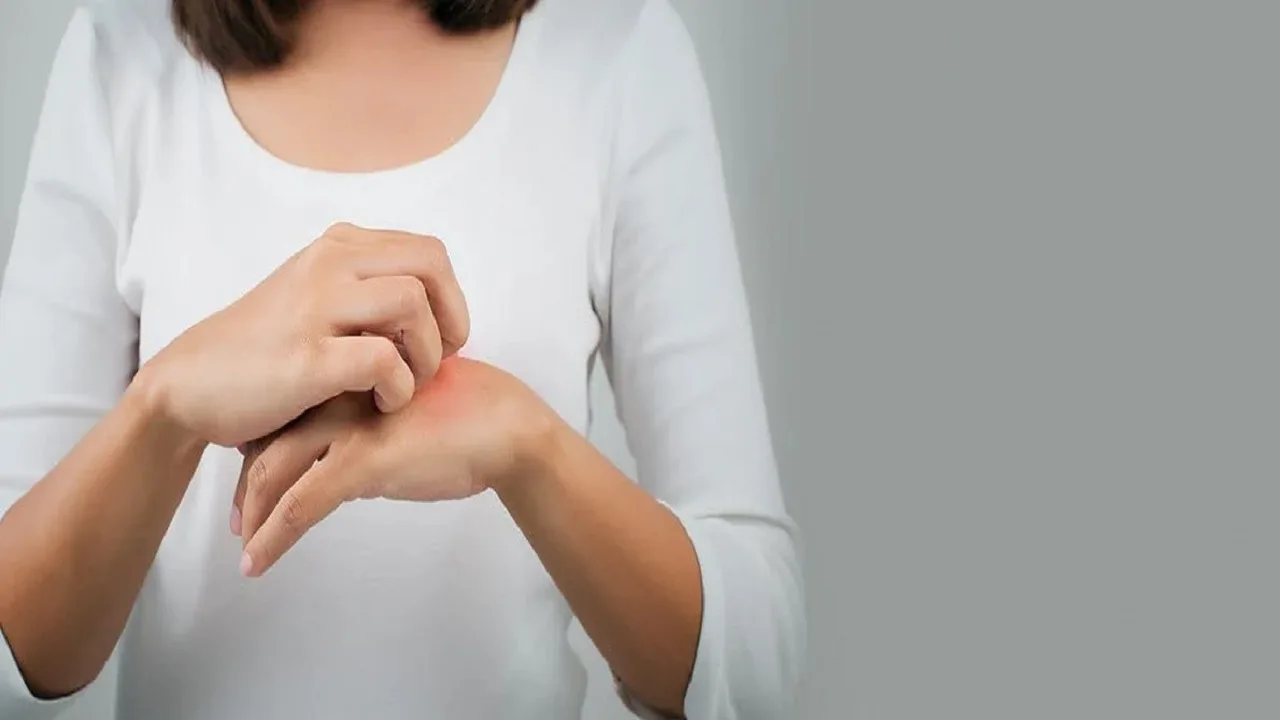Dyshidrosis is an eczema that etymologically means “ caused by abnormal sweating, ” but the pathology has no relation to sweating, although sweat can aggravate it. The disorder begins with small blisters that become red, inflamed and then scaly. Dyshidrosis appears and disappears, causing attacks months or years apart and generally causing a lot of itching. A bacterial infection can develop in the skin affected by dyshidrosis. It takes weeks for this problem to heal spontaneously.
What are the symptoms of dyshidrosis?
Dyshidrosis is a chronic dermatitis characterized by scaly blisters on the palms of the hands, the sides of the fingers, and sometimes the soles of the feet.
The symptoms experienced by patients essentially include palmoplantar itching and a clinically manifest sign, namely vesicles and bullae, whose appearance can be variable. In the most frequent form, there is the sudden appearance of a strong itching that affects the fingers, hands and feet, associated with the concomitant presence of small vesicular lesions. The vesicles appear as multiple, raised lesions, approximately 1 mm in diameter, filled with a serous liquid (transparent), located initially on the lateral edges and on the tips of the fingers, subsequently expanding to the palms of the hands and/or feet, jointly or isolated, in particular at the bottom of the skin folds.
Causes of Dyshidrosis in the Feet and Hands
Doctors agree that dyshidrosis is triggered by multiple causes . However, other pathologies are often concomitant, such as atopic dermatitis or contact dermatitis, and psychophysical stress may be implicated, as well as intolerance to certain ingested substances , such as nickel, chromium and cobalt.
Among the many causes are:
- Atopic dermatitis : eczema often in childhood, characterized by multiform eruptions
- Allergic contact dermatitis or irritant contact
- Psycho-physical stress
- Warm weather , spring/summer
- Exposure to nickel , cobalt, chromium: occasional contact or ingestion of these elements can trigger the symptoms
- Exposure to various chemicals : chromium, paraphenylenediamine, diaminodiphenylmethane, benzoisothiazolones, lauryl sulfate, silicones, parabens
- Dermatophytes : skin diseases of fungal origin
- Exposure to UV rays
- Immunodeficiency : the reduction of immune defenses in particular subjects
- Atopy or family history of atopy: predisposition to develop skin, respiratory, or food allergies
- Hyperhidrosis : palmoplantar or diffuse excessive sweating
Dyshidrosis and nutrition
As mentioned, dyshidrosis is also linked to nutrition . A healthy and balanced diet can help keep inflammation at bay – also highlighted by sugars and food in general – as well as stress, which is a cause of this skin problem.
It is necessary to consume the right amount of proteins , a good dose of raw fruits and vegetables and carbohydrates with low glycemic impact . Obviously, a healthy lifestyle also includes some physical activity: at least 150 minutes a week.
How to Prevent Dyshidrosis in Hands and Feet
As often happens, prevention is the best cure. That’s why it’s always good to follow some healthy habits in order to prevent dyshidrosis and reduce the discomfort that this problem brings with it.
First of all, it is necessary to deeply hydrate and nourish the epidermis , with emollient products. Obviously, always use cotton clothing , in order to minimize any irritation with synthetic fabrics. With adequate protection, the sun can be beneficial for those who suffer from dyshidrosis. In case of nickel or cobalt allergy, avoid eating foods that can aggravate the situation for a few days.
